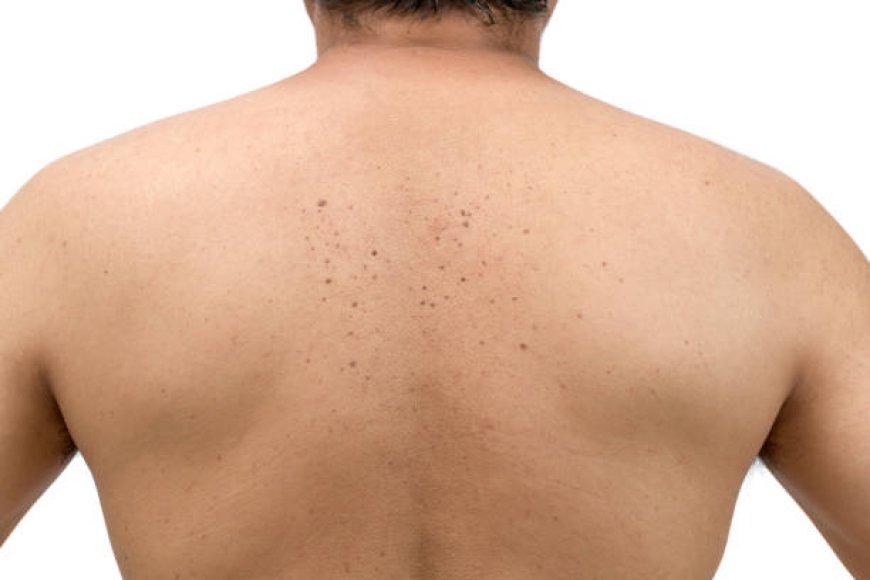Seborrheic Keratosis Treatment in Abu Dhabi: Solutions for Every Skin Type

Seborrheic keratosis is a common skin condition characterized by benign, wart-like growths that can vary in appearance. If you're seeking effective treatment options in Abu Dhabi to address seborrheic keratosis, understanding the available solutions tailored to different skin types can help you achieve optimal results. This guide provides insights into various treatment methods and how they can be customized for your skin needs.
Understanding Seborrheic Keratosis
What is Seborrheic Keratosis?
Seborrheic keratosis treatment in Abu Dhabiis a benign skin growth that typically appears as a flat or raised lesion, often with a scaly or rough surface. These growths can be brown, black, or light tan and are usually harmless. However, they can be a cosmetic concern and may require treatment for aesthetic or comfort reasons.
Causes and Risk Factors
While the exact cause of seborrheic keratosis is not fully understood, several factors may contribute to their development:
- Genetics: A family history of seborrheic keratosis may increase the likelihood of developing these growths.
- Age: They are more commonly seen in older adults but can appear in younger individuals as well.
- Sun Exposure: Although not directly caused by sun exposure, areas of sun-damaged skin may develop more seborrheic keratoses over time.
Treatment Options for Seborrheic Keratosis
1. Cryotherapy
What It Is: Cryotherapy involves freezing the seborrheic keratosis with liquid nitrogen. This treatment destroys the abnormal cells and causes the growths to eventually fall off.
Best For: Cryotherapy is suitable for most skin types and is effective for treating individual or multiple growths. It is particularly useful for those who have growths that are relatively superficial and not too extensive.
Considerations: Some redness and swelling may occur after treatment, but it usually subsides within a few days.
2. Electrosurgery
What It Is: Electrosurgery uses high-frequency electric current to remove seborrheic keratosis. This method also cauterizes the area to minimize bleeding.
Best For: Ideal for larger or more prominent growths, electrosurgery works well for various skin types, including sensitive skin. It is effective for deeper or more raised growths.
Considerations: This procedure may require local anesthesia and can result in some discomfort and swelling post-treatment.
3. Curettage
What It Is: Curettage involves scraping off the seborrheic keratosis with a curette, often combined with electrosurgery to ensure complete removal.
Best For: Effective for growths that are raised or have a rough texture. It is a good option for most skin types and is particularly useful when combined with other methods for comprehensive treatment.
Considerations: The procedure may cause some discomfort and requires a short recovery period.
4. Laser Treatment
What It Is: Laser treatment uses focused laser beams to remove seborrheic keratosis by targeting and destroying abnormal cells.
Best For: Laser treatment is suitable for sensitive skin types and smaller or more delicate growths. It is precise and minimizes damage to surrounding tissue.
Considerations: Some redness and swelling may occur, but it typically resolves within a few days. This method is excellent for those who want minimal downtime.
5. Topical Treatments
What It Is: Topical treatments involve applying medicated creams or ointments to the seborrheic keratosis to help dissolve or soften the growths.
Best For: Suitable for less severe cases or when a non-invasive approach is preferred. Ideal for patients with sensitive skin or those who prefer a less aggressive treatment.
Considerations: Topical treatments may take longer to show results and may require ongoing application.
Choosing the Right Treatment for Your Skin Type
Consult with a Dermatologist
The best approach to treating seborrheic keratosis depends on your specific skin type and the characteristics of the growths. Consulting with a qualified dermatologist in Abu Dhabi is crucial to determine the most appropriate treatment. A dermatologist can assess your condition, recommend tailored treatments, and ensure that the selected method is suitable for your skin type.
Evaluate Clinic Expertise
Select a clinic with experienced practitioners who specialize in treating seborrheic keratosis. Check for reviews, qualifications, and patient feedback to ensure you receive high-quality care.
Consider Costs and Payment Options
Treatment costs can vary depending on the method used and the clinic's pricing. Inquire about costs and explore payment options or insurance coverage to make informed decisions.
FAQs About Seborrheic Keratosis Treatment
What is the typical cost of seborrheic keratosis treatment in Abu Dhabi?
Costs generally range from AED 1,000 to AED 5,000, depending on the treatment method and clinic.
Are seborrheic keratosis treatments covered by health insurance?
Coverage for seborrheic keratosis treatments may vary. It is advisable to check with your insurance provider for specific details.
How long does recovery take after treatment?
Recovery time varies by treatment method. Cryotherapy and electrosurgery typically have minimal downtime, while laser treatment and curettage may require a few days for full healing.
Is the treatment painful?
Most treatments involve some discomfort, but local anesthesia is often used to minimize pain during the procedure.
Can seborrheic keratosis grow back after treatment?
While treated growths typically do not return, new seborrheic keratoses may develop in other areas of the skin.
Conclusion: Tailored Seborrheic Keratosis Solutions in Abu Dhabi
Seborrheic keratosis can be effectively managed with a variety of treatments tailored to different skin types and conditions. By understanding the available options and consulting with an experienced dermatologist in Abu Dhabi, you can select the best treatment to achieve clear, healthy skin. Explore your options today and take control of your skin health with personalized care and expert solutions.












